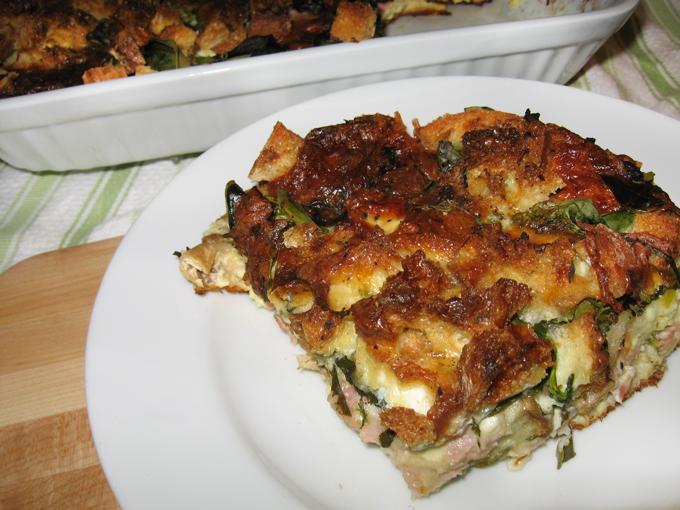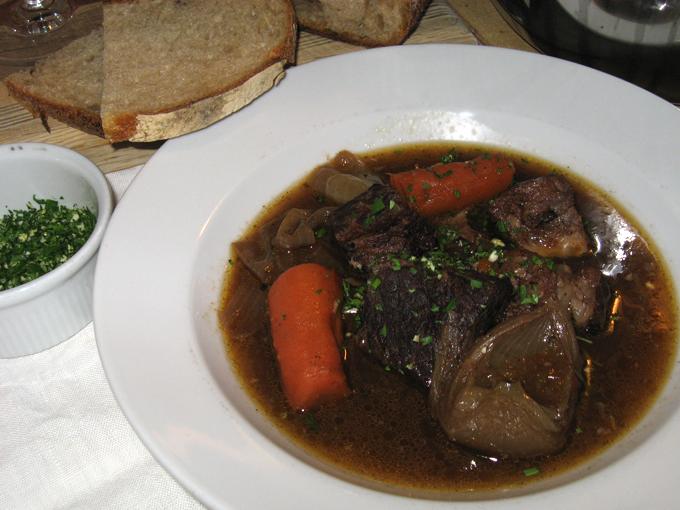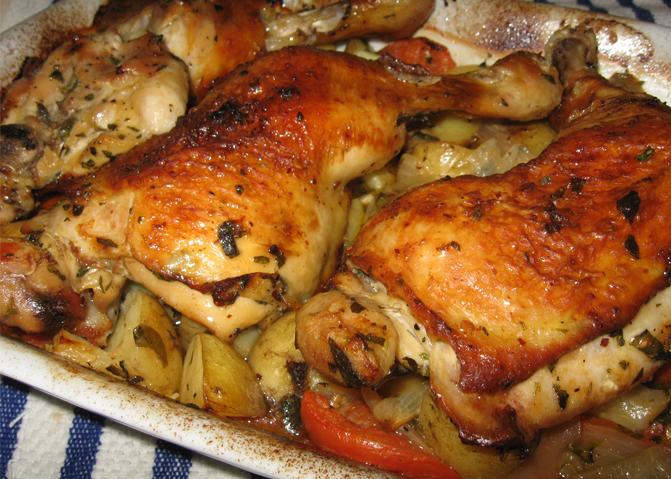-
Posts
1,729 -
Joined
-
Last visited
Content Type
Profiles
Forums
Store
Help Articles
Everything posted by djyee100
-
Thanks for telling us how it went. Sorry about the rain. February tends to be a wet month, and we did have a big spate of rain storms recently. You must have visited then. Better luck next time. We usually have very little rain between April and mid-October. That's why we tolerate (even feel grateful) for the winter rains. It means we can shower in the summer.
-
This article explains the poor quality of onions last year, especially on the East Coast (as I read this board). Regular onions everywhere are scuzzy now because it's the end of that season. Those are the last onions coming out of storage. Fresh spring onions have been in the market here for weeks, and I expect the new crop of regular onions to show up in the market soon. The quality of onions here has been fine, except for the last month or two, which is normal for us. California, Oregon, & Idaho all grow large crops of onions. As far as I know, those crops had no problems.
-
Harrysnapperorgans, I liked that variation on chicken pot pie. Knaw, a wonderful tagine. It reminded me that chicken tagine is on my To Cook list. DeliciouslyLekker, that stampot looks like good comfort food. Dejah, I could eat that Chicken Marsala. Here, tonight's dinner was Ham, Cheese, and Spinach Strata. I started with the recipe for Cheese Strata in Rozanne Gold's Radically Simple, but switched it around here and there as I was cooking. The strata is a savory bread pudding constructed in layers of ham, cheese, scallions, spinach and herbs. The top and bottom crusts turn cheesy crunchy, while the middle is creamy. It makes a delicious light dinner with salad. The strata recipe caught my attention because it can be entirely prepped the day ahead. In fact, it's better if it sits in the fridge for awhile. Popping a casserole into the oven, then walking away, is my style of cooking for a weekday night. To make Ham, Cheese, and Spinach Strata: The ingredients: 3/4 lb day-old bread, 1/2 lb thinly sliced ham, 1/4 cup crumbled feta, 1/2 lb shredded mozzarella, 1/4 cup chopped scallions, 1/4 lb fresh baby spinach, 1 TB fresh thyme leaves, 6 large eggs, 2 cups Half & Half, 1/2 tsp hot sauce. The method: Butter a 9X13 baking dish. Layer bread slices on the bottom, trimming pieces to fit. Cover with half of: ham, feta, mozzarella, scallions, spinach, thyme. Repeat layers, starting with bread slices, but reserve some mozzarella for the top. Dice some bread into 1/2" cubes, and scatter on top with the remaining mozzarella. Press down on the casserole with your hands to pack the ingredients. Whisk together the eggs, Half & Half, and hot sauce. (BTW, use the hot sauce. This dish really isn't spicy but that little bit of hot sauce keeps everything interesting.) Carefully pour egg mixture over the casserole. Cover, and refrigerate at least 5 hours or overnight. To cook, uncover, put the baking dish in the middle of the oven, turn the temp to 375 degrees, and bake for about an hour. Check with a skewer in the center for doneness. The skewer should not be eggy. I cooked my casserole for 1 hour, lowered the heat to 350 degrees and tented foil over the top (to slow down the browning), then cooked it for another 15-20 mins. Serve hot. Rozanne Gold's original recipe is here: http://rozannegold.wordpress.com/2010/12/03/morning-meditation/
-
Freshly made basil pesto with spaghetti. It's perfect. Pesto has only 5 ingredients that go into the blender: basil, oil, pinenuts, garlic, cheese.
-
I was told not to put any marble in the dishwasher, because the acid in dishwashing soap would damage it. Anybody know about this? It sounds like your slab is too big for the dishwasher anyway, but I thought I'd bring up the question.
-
The archvillain Cruella de Vil from The 101 Dalmatians (Dodie Smith's original story) loved black pepper. This was Cruella's dinner party menu: I was fascinated by this menu when I was a kid. But maybe you wouldn't want to serve anything like that? Since you have some great black pepper, I suggest making a flavored oil as your best chance to preserve its aromatic qualities. Crack some peppercorns, steep them in a jar with some good oil, and taste regularly until the flavor is as strong as you like it. Then strain the oil, pack it in a well-sealed jar, and use it as a drizzling oil or garnish for various dishes. You could also look into some kind of Korean grilled beef with plenty of black peppercorns in it. On the sweet side, you could put a healthy dose of black pepper into gingerbread (I recall David Tanis's new cookbook, Heart of the Artichoke, has a gingerbread recipe like that). Or you could make a spicy fruit compote with black pepper and other spices, like David Lebovitz's recipe for poached pears. Here: http://www.davidlebovitz.com/2009/11/how-to-make-poached-pears/ Also, these Lemon Black Pepper Cornmeal Cookies (from Lori Longbotham) were a hit with people when I baked them: http://www.epicurious.com/recipes/food/views/Lemon-Black-Pepper-Cornmeal-Cookies-105885 Years ago I made Alice Waters' recipe for lemon-pepper chicken wings from her Chez Panisse Menu Cookbook. This is the basic recipe: Make a marinade from 2 sliced lemons, 4 cloves crushed garlic, 2 tsp crushed black peppercorns, 1/3 cup olive oil. Marinate 12 chicken wings in this mixture at cool room temperature for 4-5 hours. Lightly salt the wings before you cook them. Then grill or roast the chicken wings. I roasted the chicken wings in a 400 degree oven for 40 mins, turning the wings halfway through cooking time. The results were good, but not great. The recipe certainly shows off black pepper. If I were making this recipe today, I would add in something else to make the flavor profile more complex: some soy sauce, maybe a little dry ginger, and definitely something sweet, like brown sugar, to balance off the spiciness of the black pepper. Have fun if you decide to play with this one.
-
I was looking at a recipe like that last night, in Rozanne Gold's cookbook, Radically Simple. Sometimes it's called "drunken pasta." It's intriguing. The recipe says to boil 1 lb pasta in 1 bottle dry white wine, 2 cups water, and 1 tsp salt. The wine is supposed to cook down to form a glaze on the pasta. I tried this recipe last night with a bottle of dry white wine and 1 lb penne, and I don't recommend it. Because there's less water or less liquid overall, compared to conventional pasta cooking, the pasta turned out gummy and unpalatable. That's my guess as to cause and effect, anyway. In Gold's recipe, you're also supposed to cook the pasta at a simmer for 20 mins. That slow cooking contributes to the gumminess too. The next step would be to cook the pasta with more wine and more water, at a normal boil. But that's an experiment for another day.
-
I was looking at a recipe like that last night, in Rozanne Gold's cookbook, Radically Simple. Sometimes it's called "drunken pasta." It's intriguing. The recipe says to boil 1 lb pasta in 1 bottle dry white wine, 2 cups water, and 1 tsp salt. The wine is supposed to cook down to form a glaze on the pasta. ETA: There are recipes for red wine "drunken pasta" online. The red wine pasta is supposed to be an attractive pink color and fruity-tasting.
-
Try sun-drying or oven-drying the peppers. You could grind up some of them after they are dried for red pepper flakes or paprika. Rosetta Costantino's cookbook, My Calabria, has detailed instructions for drying peppers and making ground pepper or paprika. It sounds as if you are picky about the process, you will get better results. Rosetta grows her own Calabrian hot peppers. I haven't done any drying myself, but I have tasted Rosetta's Calabrian ground hot pepper in a cooking class, and it's better than anything you can buy at the supermarket. The dried peppers retain their sweetness and spiciness, though not their fresh aroma.
-
Borgstrom, I liked that pork tenderloin with the bourbon-ancho sauce. I'll have to check out the recipe in Flay's cookbook. Not much cooking here, as I approach a project deadline. I thought about cooking up the odd assortment of ingredients in my fridge and posting, but instead I finished off a leftover bottle of wine. The rest of dinner will be leftovers, too.
-
I'm not sure the duck head is kept on for any reason except the aesthetic. I was told by an Asian chef once that a whole-cooked bird without the head is unattractive. It's decapitated. That's obviously very different from the Western ideal. A restaurant I go to in SF has pix of the various poultry it serves. Whole birds are served with the head. Anybody else know?
-

Interesting prescriptions from old cookbooks\magazines
djyee100 replied to a topic in Food Traditions & Culture
Remember the time and conditions under which this advice was given. If it was a 100 years ago or so, people had a very different lifestyle. - No modern heating, so people had to rely on their bodies and clothes to stay warm. - Most people did physical labor for a living. Housework required physical labor too. - Most people walked or rode bikes. They didn't have cars. Fat is like concentrated, high-octane fuel that can keep you going and keep you warm. When I go backpacking in the Sierra, I bring cheese and salami to eat. The fat keeps me warm at the higher elevations, especially on chilly nights. The salt is important to replace the salt I lose from sweating. I once read a study of people who live in the Alps. They eat one of the highest fat diets in the world, yet they have low rates of heart disease. Why? They walk up and down mountains, that's why. They burn it up, and their bodies need that concentrated fuel. Fat, salt, and sugar are not intrinsically bad, IMO. But in today's modern lifestyle, which is physically inactive compared to our ancestors, those foods can be inappropriate, especially in large quantities. -
Thanks for that link... It looks like something that would be fun to try to make. Beef rendang was probably the most popular dish on EGullet's Cradle of Flavor thread. The intro blurb and recipe from James Oseland's cookbook are here: http://splendidtable.publicradio.org/recipes/main_beefrendang.shtml
-
Helenjp and Haresfur touch upon the issue that I think would have been the subject of a thoughtful article (rather than a diatribe). I once listened to an interview with Joseph Campbell. He said: We live off the death of others, and that makes us profoundly uncomfortable. Not just you and I and others of our time and culture--the peoples of early and so-called primitive cultures have also been aware of this dilemma. Many early myths and rituals are designed to acknowledge and show respect for this fact: the deaths of animals and plants sustain our human life. I point this out to my vegetarian friends when we have discussions about meat-eating (specifically, mine). We share life on this planet. I certainly have issues about the way some animals are raised and slaughtered, and also how some crops are grown. However, unless we start eating rocks (I don't recommend it), we will be living off the deaths of plants and animals. That fact is inescapable.
-
On days when I'm so tired it's a struggle to wash greens: I put the washed and dried greens in a bowl, and sprinkle on some olive oil, just enough to coat the leaves lightly. I toss to coat the leaves. Then I add a dash of salt, and a tiny sprinkle of vinegar. It may be only a few drops of vinegar depending on the quantity of greens. Toss again. Taste a leaf. Adjust the oil-vinegar-salt balance by adding whatever the dressing seems to need. Toss. Taste again. Keep going until the balance is just right. Once you understand this method, you'll only need to taste once or twice, and you'll have the balance you like.
-
It's a soapbox rant. The author constructs his straw men, these horrible "foodies"--people who eat to excess, are indifferent to the suffering of animals, brag about the exotic foods they eat, etc. In fact, there are few people as extreme as the author describes, in the food world or life in general. So once the author constructs these straw men, he easily knocks them down. Not a particularly challenging intellectual exercise--for the author or the reader. Rather than build a bridge of understanding, the author chooses to burn people at the stake. From the photo in the Sietsema article, the author appears to be a fairly young man. He has a lot to learn, I think. Two thumbs up for Robert Sietsema's response, including this conclusion: "Ultimately, I think Myers's real problem is dyspepsia. He really, really doesn't enjoy eating. And resents those of us who do." Was it W.H. Auden who once said, "People who abhor pleasure are often abusers." ?
-
Dakki, that rock cornish hen looks luscious! Bruce, I once cooked a Shaker classic dish of swordfish in a curry-cream sauce. I didn't think the combo would work, but it was actually very good. How did the curried scallops go over with your panel of judges? On the menu yesterday, beef stew. All the talk about beef stew on EGullet got me thinking about it. This version comes from Alice Waters' Art of Simple Food. It's an intensely flavored stew, no potatoes in it to soften the flavors, and French touches like bacon, red wine, brandy, and orange zest. Herbs like thyme and savory, diced tomatoes, and a load of garlic show a Mediterranean influence. This stew has a wonderful aroma when it's cooking. Since I like a clean broth in my stews, I removed the meat and vegs at the end of cooking time, and strained the sauce. Then I put everything back into the pot and reheated it. This article has an adapted recipe. No black olives in the original basic recipe, but the olives are mentioned as a possible variation in the recipe's notes. This adapted recipe also omits a parsley-garlic garnish (1 TB chopped parsley combined with 1-2 finely chopped garlic cloves), and instead stirs raw garlic into the stew and sprinkles on parsley. Otherwise this recipe is the same as the one in the book. http://articles.latimes.com/2007/oct/10/food/fo-watchrecc
-
So I dug into my kitchen cabinet until I found my jar of herbes de Provence, took a pinch, and tasted it. The combo of lamb, herbes de Provence, and truffles should be fine. My Herbes de Provence had a whiff of lavender when I smelled it, but the lavender does not dominate the blend. The flavor of the herbs is mostly green: basil, rosemary, sage, marjoram, thyme. All those herbs should go fine with lamb and truffles. My Herbes de Provence had quite a bit of fennel seed in it also. I suggest you taste your herb blend and go from there. Each herb blend for "herbes de Provence" varies, depending on the purveyor.
-
I asked Rosetta Costantino your question, and this was her reply by email: Page 44 may be viewable on Googlebooks. Keep scrolling. http://books.google.com/books?id=86R77RdzTj8C&printsec=frontcover&dq=my+calabria&hl=en&ei=a9xSTdnNIoP2swOj8ZGvBw&sa=X&oi=book_result&ct=result&resnum=1&ved=0CCcQ6AEwAA#v=onepage&q&f=false
-
I was at a local restaurant and noticed a new dessert on the menu. The waiter told me it had been put on the menu that day. It was named "Lemon Sponge Tart." Guess what it was. Yep, lemon pudding cake (a la Katie Meadows and plum tart), baked in a deep, individual tart shell (the kind made from a pastry ring), topped with a slice of candied lemon, and accompanied by a scoop of crema gelato. I was delighted to see this old-fashioned dessert get the glam treatment--a modern-day makeover. It was enjoyable eating, too.
-
I liked Rico's pastrami sandwich photo too, and Shelby's pic of her cats (gazing at the birds in the snow?). Dcarch, I shall have to think of ways to put tapioca pearls on some shellfish dishes that I make. Stunning! Here, a busy day dinner of Baked Chicken with Potatoes, Tomatoes, and Hot Pepper. The recipe comes from Rosetta Costantino's cookbook, My Calabria. I tossed chicken legs with potatoes, tomatoes, onions, garlic, and olive oil, and seasoned it liberally with fresh oregano and red pepper flakes. The I set everything to bake in a hot oven for about an hour, while I relaxed on the sofa until dinner was ready. At the end of a busy day, that's my kind of cooking. The recipe is online here: http://napavalleyregister.com/article_6c5c601c-eba7-11df-9e13-001cc4c002e0.html
-
That's a very interesting recipe, Bad Rabbit. It has liquid in the batter, slightly more flour than I would expect for pudding cake (1/2 cup), and no whipped egg whites. So I would expect the texture to be heavier and more brownie-like. It's yet another variation on this old dessert.
-
I've never made this pasta, not even eaten it, so I can't tell you what it's like. If you decide to make it, pls tell us about it.
-
Years ago I cooked a Catalan beef stew with sherry, cocoa, and cinnamon. Delicious and distinctive. It was similar to Colman Andrews' recipe (beef stew #1) in his Catalan Cuisine book, except the recipe I used substituted cocoa for the grated chocolate and omitted the sausage. On Googlebooks: http://books.google.com/books?id=-K_ekX6BVXsC&pg=PA233&lpg=PA233&dq=catalan+beef+stew+colman+andrews&source=bl&ots=EPVif0Haex&sig=vGd2EJzllOXbSR16yTyx71JbQvQ&hl=en&ei=HbdPTdrLNILWtQPhk8WnCg&sa=X&oi=book_result&ct=result&resnum=1&ved=0CBMQ6AEwAA#v=onepage&q&f=false
-
I'm fascinated by "fusilli calabrese" that I've read about in Rosetta Costantino's new cookbook, My Calabria. The pasta is rolled and shaped around a knitting needle. A video on it: ETA: That's Rosetta on the video, BTW. The recipe for the goat sauce that's paired with this pasta: http://www.projectfoodie.com/cookbook-recipes/recipe/fresh-knitting-needle-pasta-with-goat-sauce.html More pasta shapes from Calabria, including Costantino's homemade pasta recipe, on page 59. From Googlebooks: http://books.google.com/books?id=86R77RdzTj8C&pg=PA46&lpg=PA46&dq=costantino+my+calabria+homemade+fresh+pasta&source=bl&ots=vW5lGMMub7&sig=gb66jnX8DY1cVmgSkeh0msZ68MM&hl=en&ei=8a1PTZaNOYK6sQPu9dm8Cg&sa=X&oi=book_result&ct=result&resnum=1&ved=0CBcQ6AEwAA#v=onepage&q&f=false




